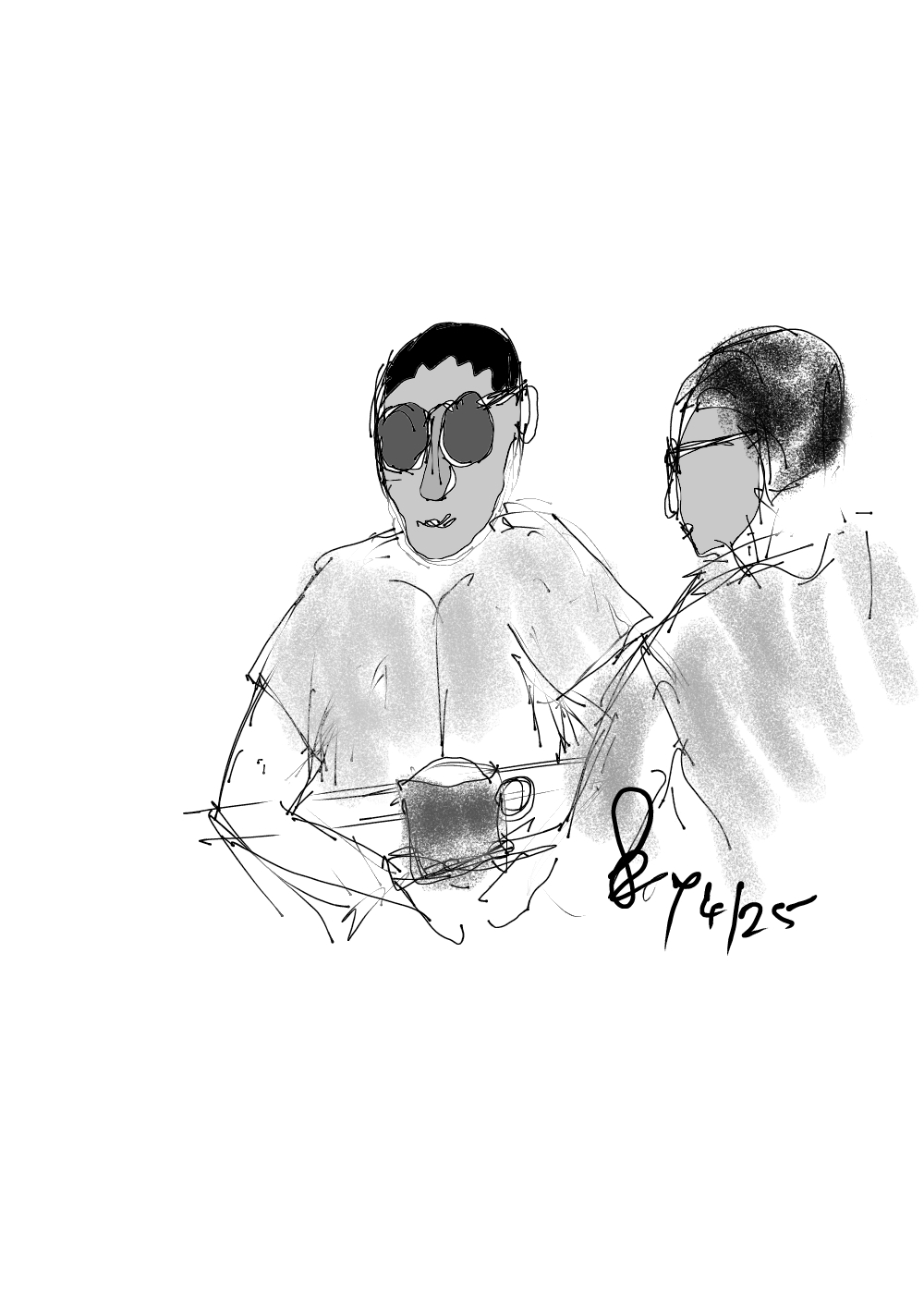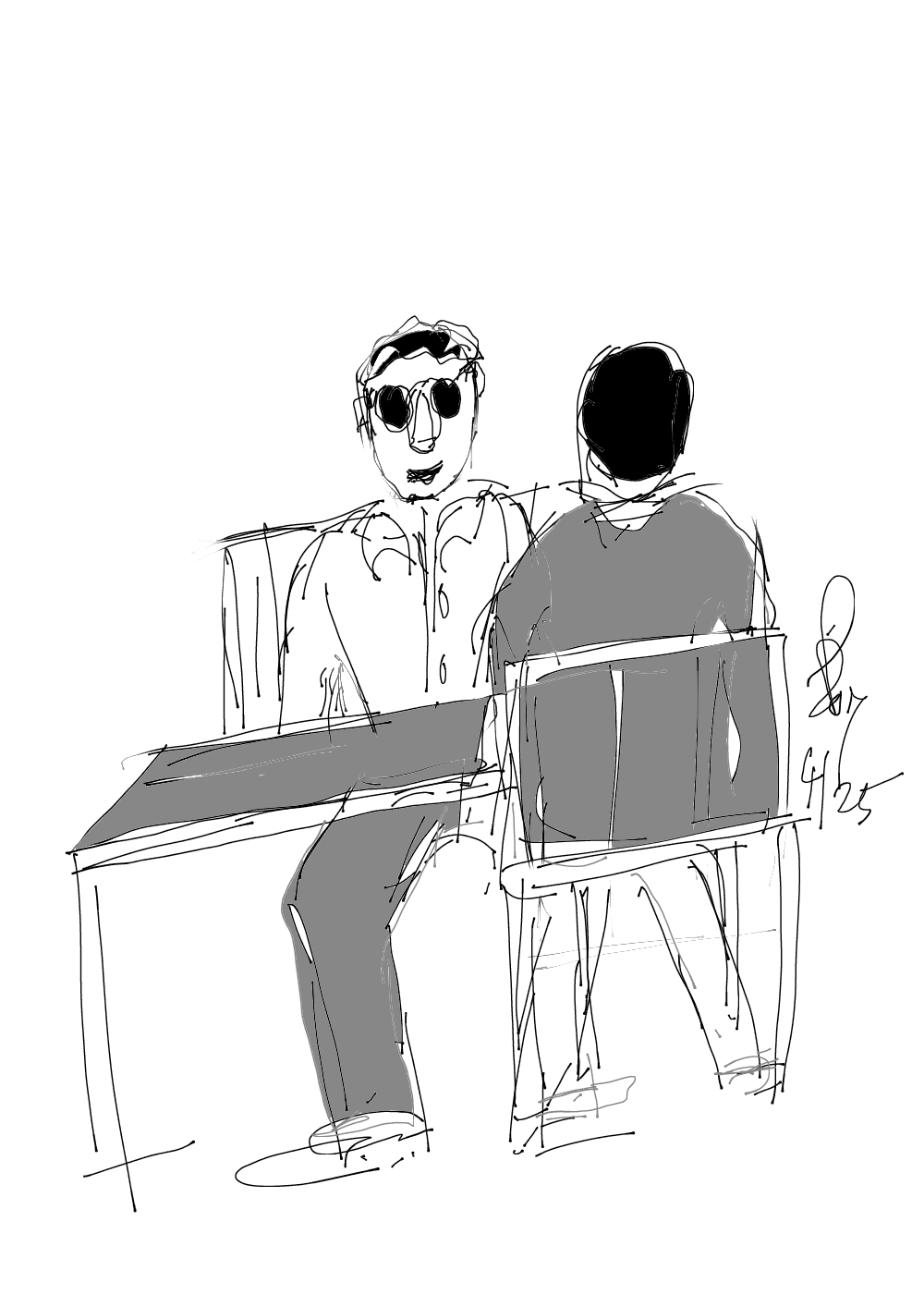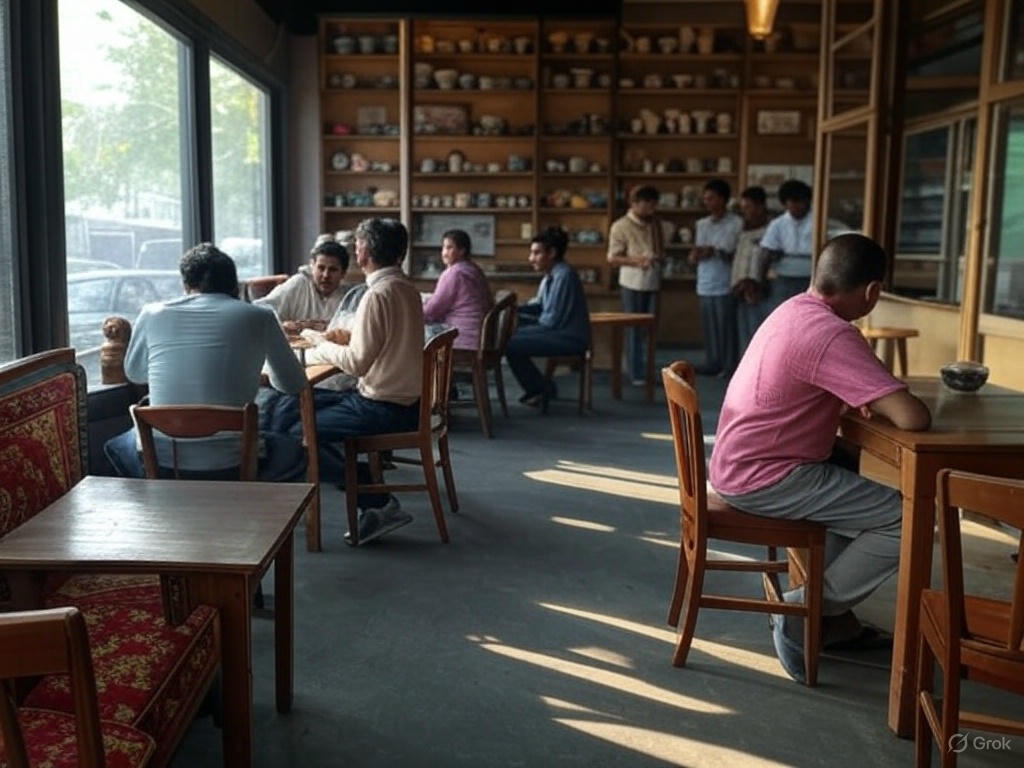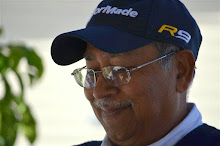Monday, April 28, 2025
बड़ा जोश, छोटा स्वाद!"
Tuesday, April 22, 2025
Transactional, Symbiotic, or just Convinient?
Chicken Cutlets, Coffee & the Curious Case of Relationships
— A Conversation Between Two Philosophical Foodies
It was one of those golden Kolkata afternoons — the kind where the fan above spins like a tired philosopher, the sun plays peekaboo through old club curtains, and the waiter at DKS walks with the poise of someone who’s seen more political coups over table reservations than in Parliament.
Me and Samaranand — my friend, sparring partner in abstraction, and resident metaphysician — were at our favorite corner table. In front of us: two cups of steaming coffee, two plates of golden, crisp chicken cutlet, and one intangible topic on the table — relationships.
"Relationships," I began, crunching into the cutlet like it owed me money, “have expiry dates. They start strong, warm, promising — and then one fine morning, they sour. Like milk. Or like idealism in a corporate meeting.”
Samaranand, unfazed as ever, took a gentle sip of coffee, and replied, “Or maybe it’s all about convenience. People no longer want to be emotional liabilities to one another. Like old parents choosing retirement homes, not because they’re unloved — but because they value their children's freedom and their own independence.”
Then, with a professor’s glee, he threw in his now-famous crocodile analogy.
“The crocodile,” he declared, “sits with its mouth wide open, basking in the sun after a hearty lunch. Small birds perch on its jaws, picking at the bits of fish stuck between its teeth. The birds get food; the crocodile gets a dental cleaning. That’s symbiosis.”
A thoughtful silence hung in the air. Somewhere in the club, someone was arguing about bridge rules. We remained with our cutlets and our thoughts.
“So…” I said slowly, “does that mean buyers and sellers have a symbiotic relationship too? Or in-laws?”
He chuckled. “Why not? As long as both parties benefit, it’s symbiosis. The moment one only takes and the other only gives — it’s parasitic. And when both pretend to benefit while secretly resenting each other — that's family.”
I choked slightly on my coffee.
Then, to add layers to this already flavourful philosophy, we decided to explore some literary relationships.
“Take Sherlock Holmes and Dr. Watson,” I offered. “Sherlock — the razor-sharp, emotionally unavailable genius. Watson — the dependable chronicler, the loyal friend. Together, they’re better than they are apart. But it’s not equal — Sherlock often takes, and Watson gives. Yet neither can do without the other.”
“Symbiosis again,” Samaranand nodded. “Watson finds purpose. Holmes gets sanity.”
“And what about James Bond and M?” I asked.
He leaned back. “Ah, authority and rebellion. Discipline and impulse. M trusts Bond with the kingdom’s dirtiest work. Bond defies orders, breaks rules, yet never fails the mission. It’s a relationship built on functional friction. Not warm — but unbreakable.”
Then he smiled, “Now contrast that with Wooster and Jeeves.”
“Ah!” I exclaimed. “The gentleman and the valet. The brain and the butler. Wooster thinks he’s in charge, but we know who really is.”
“Exactly,” Samaranand grinned. “It’s the reverse of Bond. The servant leads, the master follows — all under the illusion of aristocratic control. That, my friend, is a symbiotic deception.”
As we wrapped up our second coffee, I added, “And then there’s The Gentleman in Moscow — Count Rostov and the hotel. He’s under house arrest, yet becomes part of the hotel’s soul. A prisoner turned guardian, a relic turned anchor. He gives life to the place, and it gives him purpose.”
“That’s almost poetic,” Samaranand said softly.
The plates were empty now. The club grew quieter, except for a lone spoon stirring tea somewhere, like a metronome counting down time.
Our verdict? Relationships may not always be eternal, but they evolve — from passion to partnership, from obligation to quiet companionship. Some fade. Others deepen. A few, like the plover bird and crocodile, survive because of need. Others, like Jeeves and Wooster, thrive on gentle manipulation wrapped in affection.
As we stood up to leave, I wondered aloud, “So what are we — me and you?”
Samaranand adjusted his kurta, raised an eyebrow and said, “I bring metaphysics. You bring mustard sauce. I'd say... perfectly symbiotic.”
Friday, April 18, 2025
হর্ষবর্ধন ও গোবর্ধনের পিজ্জা-
হর্ষবর্ধন ও গোবর্ধনের পিজ্জা-
হর্ষবর্ধনের মাথায় নতুন ভূত চাপল—"ইটালিয়ান কালচার অ্যাডপ্ট করব!" তাই সকালবেলা গোবর্ধনকে ডেকে বললেন,
—“গোবু, আজ আর পরোটা-কচুরি নয়। আজ খাব পিৎজা!”
গোবর্ধন চশমার ওপারে চোখ কুঁচকে বলল,
—“পিৎজা মানে যে ওই রুটির ওপরে কাঁচা সবজি ফেলে দেয়?”
হর্ষবর্ধন গম্ভীর হয়ে বললেন,
—“তোর মতো গ্রাম্য মনোভাব নিয়ে কোথাও পৌঁছানো যাবে না গোবু! এটাই হল আজকের গ্লোবাল গ্যাস্ট্রোনমি!”
ঠিক হলো, যাবে ডমিনোজ—গলফ গ্রীন শাখা, যেটার সামনে হর্ষবর্ধন প্রায়ই বলতেন, “এটা কি ডোমিনো ইলেভেনের কোনো এক্সটেনশন?”
দু'জনে ঢুকল দোকানে। ভেতরে এয়ার কন্ডিশনের শীতলতায় গোবর্ধনের নাক হাঁচির ফোয়ারা ছাড়ল।
কাউন্টারে এসে হর্ষবর্ধন বললেন,
—“আমাদের একটা পিৎজা দিতে হবে... কিন্তু সেইটা যেন... যাকে বলে একদম ঐতিহাসিক হয়!”
কর্মচারী হেসে বললেন, “সার, কোন বেস নেবেন? হ্যান্ড টসড, প্যান, থিন ক্রাস্ট?”
হর্ষবর্ধন এক মুহূর্ত থেমে, গম্ভীর গলায় বললেন,
—“আমরা হ্যান্ড টস করেই খাই সাধারণত, পিঠা-পুলি... তবে আপ্নারা যেটা বেশি দামী, সেটা দিন।”
গোবর্ধন ফিসফিস করে বলল,
—“ভাই, প্যান তো শুনেছি বাসন হয়, সেটা কি খাব?”
এরপর এল উপাদানের পর্ব।
কর্মচারী: “স্যার, টপিংস কী কী নেবেন? টমেটো, ক্যাপসিকাম, জালাপেনোস, সুইট কর্ন—”
হর্ষবর্ধন সঙ্গে সঙ্গে বললেন,
—“টমেটো তো থাকে বাঙালির রক্তে! সেটা রাখুন। ক্যাপসিকামটা কি শিমের কাকা গোবু?”
গোবর্ধন মাথা চুলকে বলল,
—“জালাপেনো কি জ্বালাপোড়া?”
—“তা’ই তো হবে। গরম খাবার খাওয়া তো শরীরের পক্ষে ক্ষতিকর। সেটা বাদ দিন। কর্ন রাখুন, আমরা তো চাষির বংশধর!”
হর্ষবর্ধন তখন পনির আর চিজ নিয়ে সন্দিগ্ধ।
—“চিজ আর পনির কি এক জিনিস? আরেকটা দিলে কি দাম কমবে?”
কর্মচারী বিরক্ত হয়ে বলল, “স্যার, ওগুলো আলাদা নয়, একই ক্যাটাগরির। চিজ হবে নাকি চিজ বার্স্ট?”
—“চিজ বার্স্ট মানে? ওটা কি খাবার না বোমা?”
গোবর্ধন সাহস করে বলল,
—“ভাই, বার্স্ট মানে ফেটে যাবে! এরপর যদি পেটও বার্স্ট করে—?”
অবশেষে কোনোরকমে একটা পিজ্জা অর্ডার হয়ে গেল। হর্ষবর্ধন চেয়ার টেনে বসে বললেন,
—“গোবু, দেখিস... আজকের দিনে আমরা ইতিহাস তৈরি করলাম। ভবিষ্যতে বাঙালি বলবে—পিজ্জার শুরু হয়েছিল হর্ষবর্ধন গোবর্ধনের হাত ধরে!”
গোবর্ধন এক টুকরো পিজ্জা মুখে নিয়ে ফিসফিস করে বলল,
—“আহারে, এর থেকে মায়ের করে দেওয়া লুচি-আলুর দমই ভালো ছিল...”
পাশের এক টেবিল থেকে কারো আওয়াজ ভেসে এলো—“ওই যে, আবার এসেছে সেই দুই পিজ্জা-পণ্ডিত
হর্ষবর্ধন ও গোবর্ধনের পিজ্জা-প্রথমার্পণ (পর্ব ২)
“ফ্লেকস, ফর্ক আর ফ্যাশনেবল খাদ্যবিধি”
পিজ্জা এসে গেছে। গোলাকৃতি এক অচেনা বস্তু। তার ওপর নানা রঙের সবজি, গলানো চিজ, আর একপাশে দুটো ছোট কৌটো—একটায় লাল গুঁড়ো আরেকটায় কাঁচা কাঁচা জিনিস!
গোবর্ধন ফিসফিস করে বলল,
—“ভাই, ওগুলো কি? এই লালটা কি বেদানা গুঁড়ো?”
হর্ষবর্ধন চোখ ছোট করে বললেন,
—“না রে গোবু, এগুলো হচ্ছে কালচারের কামান... এগুলোর নাম চিলি ফ্লেক্স আর অরিগ্যানো। খেয়ে দেখিস, মুখ দিয়ে ভাষা বেরোবে না!”
গোবর্ধন চিলি ফ্লেক্স এক চিমটে করে দিল পিজ্জার ওপরে। তারপর এক কামড় দিয়েই চিৎকার—
—“হাই হাই! মুখে আগুন! এ যে একেবারে কাঁচা মরিচের পিশে দেওয়া অবতার!”
হর্ষবর্ধন গাম্ভীর্য বজায় রেখে বললেন,
—“বিদেশি খাবারে কষ্ট একটু হবেই। না জ্বললে পেট পরিষ্কার হয় কী করে?”
এরপর এল কাঁটা-চামচ প্রসঙ্গ।
ডোমিনোজের ছেলে politely দিয়ে গেল ফর্ক আর নাইফ।
গোবর্ধন কাঁটা চামচ হাতে নিয়ে বলল,
—“ভাই, এটা দিয়ে তো ইলিশ কাটা যায় না, পিজ্জা কাটা যাবে?”
হর্ষবর্ধন দার্শনিকের ভঙ্গিতে বললেন,
—“ইহা কেবল ভোজন নয় গোবু, এটি একটি আর্ট। পশ্চিমা সভ্যতা বলে, খাদ্য গ্রহণও একটি পরিশীলিত পর্ব। খেতে হবে ঠিকভাবে। কোণ ৪৫ ডিগ্রিতে নাইফ, ৩০ ডিগ্রিতে ফর্ক। অ্যাংগেল বজায় রাখিস।”
গোবর্ধন তার মুখে একচিমটে পিজ্জা নিয়ে বলল,
—“আমার অ্যাংগেলে তো পিজ্জা ঢুকতেই চাইছে না! আমি বরং হাতেই খাই।”
—“না না! হাত দিয়ে খেলে পাশের টেবিলের লোক ভাববে আমরা বন থেকে এলাম। এখন গ্লোবালিজড সভ্যতায় হাত দেওয়া মানেই অপরাধ!”
পাশের টেবিলের এক বাচ্চা তখন পিজ্জা তুলে খাচ্ছে হাতে। গোবর্ধন সেই দৃশ্য দেখে বলল,
—“ওটা কি তাহলে ছোটখাটো অপরাধ?”
হর্ষবর্ধন তখনও ছুরি-কাঁটা হাতে ব্যস্ত। পিজ্জা কাটতে গিয়ে প্লেট থেকে স্লাইস পিছলে পাশের চেয়ারে গিয়ে পড়ল। সে চেয়ারে বসে ছিলেন এক গুরুগম্ভীর সাহেবসুলভ ব্যক্তি, যিনি আচমকা চিৎকার করে উঠলেন,
—“What the hell!”
হর্ষবর্ধন বললেন,
—“Sir, this is not hell, this is Harshabardhan. And that is our pizza. Sorry for the missile.”
শেষে সব হার মেনে দু’জনেই হাত দিয়ে খেতে শুরু করলেন। গালভরা চিজ, জ্বলন্ত ফ্লেক্স, আর ভিতরে তপ্ত টমেটোতে গোবর্ধন জিভ কামড়ে বলল—
—“এই জিনিস খেতে গিয়ে যদি ভাষা হারাই, তখন কী বলবি ভাই?”
হর্ষবর্ধন অট্টহাসি হেসে বললেন,
—“তখন বলব—তুই এখন আন্তর্জাতিক খাদ্যবর্জিত বাঙালি!”
শেষে দুই ভাই বলল,
—“আগামীবার পিজ্জা নয় গোবু, ফিরব ভেজিটেবল কাটলেট আর মোগলাই পরোটা-তেই!”
Thursday, April 17, 2025
चपरासी पिता पलटन पासवान की फाइलों की जादूगरी!
Monday, April 14, 2025
A Tapestry of Lost Time
Saturday, April 12, 2025
The Bucket List Trap:Why Living Fully Beats Checking Boxes
Friday, April 11, 2025
A Strong Arm of Project Execution:A Lesson from Farakka
The Strong Arm of Project Execution: A Lesson from Farakka
In the early 1990s to be specific in December of 1991, my most challenging posting was at the Farakka NTPC project, a 2x500 MW thermal power station in West Bengal. My predecessor had managed to complete a mere 6% of the work in three years, and I was expected to complete the rest within the same timeframe.
That period was the peak of trade unionism in Bengal, where a mere disagreement could lead to a Bandh (strike). I had heard about it, but my first experience with it was on my very first night in Farakka. Adding to my troubles, I was unwanted at the site. The previous in-charge, SKG, refused to vacate the office, the official car, and even the company bungalow. It was a battle of egos, but eventually, I managed to eject him without any support from regional HQ—a story for another day.
Once in command, I had to tackle several operational bottlenecks, the most critical being the severely delayed turbine piping work. The contractor, PCP, was struggling. The man in charge, Mr. Bose, was a friendly person but lacked the assertiveness to deal with the highly unionized workforce, which would blackmail him for overtime payments before doing any work.
A Local Strongman Enters the Picture
Among the local contractors was Mr. MC (let’s keep his full name anonymous), a tough character who took up all sorts of jobs. He would often drop into my office for casual adda (chat), sometimes hoping for work.
One day, I called Mr. Bose to my office.
"This piping work isn't moving forward, and we don’t have time to waste. I’m taking it off your hands," I said.
Surprisingly, he didn’t resist. “Fine by me, Sir! Just ensure the cost doesn’t exceed what PCP is being paid.”
That was fair enough. I immediately turned to Mr. MC and asked, "Can you do this work at the same price?"
He grinned. "Consider it done."
And to my shock, that very night, the work started—without any formal order!
The Secret Behind Overnight Mobilization
A week later, I called Mr. MC to my office.
"How did you manage to get trained welders and fitters overnight?" I asked, still puzzled.
He threw back his head and laughed. “Simple, Sir! I used the same workers from PCP… but at night!”
I raised an eyebrow. “But weren’t they refusing to work without extra pay?”
He leaned in, his eyes twinkling. "With me, they knew there was no room for blackmail. If they tried, the danda (stick) would do the talking. Union or no union, they knew who was in charge.”
It was a moment of revelation. The same workers who held the previous contractor hostage with their demands worked efficiently under a man they feared and respected.
A Parallel from the Mahabharata
This incident reminded me of a scene from the Mahabharata, where Krishna advised Arjuna that sometimes, winning a battle requires thinking beyond conventional strategies. During the war, when Dronacharya seemed invincible, Krishna devised a psychological trick—spreading the false news of Ashwatthama's death. It was not the purest of tactics, but it achieved the ultimate goal.
Similarly, in project execution, we always prefer lawful methods, but sometimes, practical realities demand unconventional solutions. In Farakka, I learned that:
- Legal contracts and rules are important, but ground-level control matters more.
- A strong local enforcer can break bottlenecks that outsiders struggle with.
- Leadership isn't just about authority; it's about understanding the psychology of your workforce.
From that moment onward, Mr. MC became my strong arm in the project. People knew it too, and that gave me an upper hand in dealing with the unionized environment.
Both 500 MW units of NTPC's in Farakka were successfully commissioned by 1994 and in October of that year I was promoted as General Manager and got posted at Eastern Region,HQ of BHEL.
The Management Lesson
Projects, especially large infrastructure ones, don’t get completed just by following rulebooks. You need to:
- Identify bottlenecks early.
- Find enablers who can deliver, even if they don’t fit conventional leadership models.
- Balance the law with practical ground realities.
Sometimes, having the law on your side is good—but having the other side of the law on your side can be even better!
Sunday, April 06, 2025
কলকাতার ঐতিহ্যবাহী বসন্ত কেবিন – স্বাদের ইতিহাসের এক জীবন্ত সাক্ষী।
কাল টলি ক্লাবে আমার দেখা হয়ে গেল বসন্ত কেবিনের চতুর্থ প্রজন্মের উত্তরসূরির সঙ্গে। বেশ প্রাণবন্ত ছেলেটি, গল্ফ খেলে, আর একসময় ইংল্যান্ডে উইপ্রো-তে কাজ ছেড়ে কলকাতায় ফিরে এসে এখন টিসিএস-এ চাকরি করছে। নিজেকে সে বলল ‘একদম খাঁটি বাঙালি’—বাংলা আর মোহনবাগানকে নিয়ে তার আবেগ চোখে পড়ার মতো। তার কলকাতায় ফেরা আর নিজের শিকড়ে ফিরে আসার সিদ্ধান্তটা আমাকে খুব ছুঁয়ে গেল। আমাদের অনেকের মধ্যেই তো এই টান কাজ করে, না হলে কলকাতায় সেটেল করলাম কেনো।
ওর সঙ্গে কথা বলতে বলতে আমি ফিরে গেলাম ১৯৬০ সালের কলকাতায়—যখন আমি আর আমার মেজো ভাই অমু প্রথম এসেছিলাম এই শহরে। থাকতাম কলেজ স্ট্রিটে গুপ্তকাকুর বাড়িতে। ওনিই প্রথম আমাদের নিয়ে গেলেন বাসন্ত কেবিনে, আর পরিচয় করালেন সেই স্বর্গীয় স্বাদের ঢাকাই পরোটার সঙ্গে। আজও সেই প্রথম কামড়টা মনে পড়লে গায়ে কাঁটা দেয়—এতটা স্মৃতিময়, এতটা স্বাদে ভরা ছিল সেটা।
এই ছেলেটির সঙ্গে স্বাভাবিকভাবেই বসন্ত কেবিন নিয়ে অনেক কথা হল। ও বলল, এখন কলকাতায় তিনটে শাখা আছে। আমি জিজ্ঞেস করলাম, "দক্ষিণ কলকাতায় একটা কেন খুলছেন না?" সত্যি কথা বলতে, এই প্রশ্নে আমার একটু স্বার্থও ছিল—নিজের বাড়ির কাছেই যদি পেতাম, মন্দ কী!
ওর উত্তরটা ছিল বেশ ভেবেচিন্তে দেওয়া। বলল, অনেকেই ফ্র্যাঞ্চাইজি অফার নিয়ে এসেছেন, কিন্তু ওদের পরিবার এখনো দ্বিধায় আছে। কারণ? গুণগত মান বজায় রাখা। বলল, “একবার যদি স্বাদ খারাপ হল, তাহলে ঐতিহ্যটাই নষ্ট হয়ে যাবে।” উদাহরণ দিল উত্তর কলকাতার মিত্র ক্যাফের, যারা দক্ষিণে শাখা খুলেছিল। আমি নিজেও গিয়েছি, আর স্বীকার করতেই হবে—সেই পুরনো গন্ধ-স্বাদ-আবেগ কিছুই ছিল না।
প্রশ্ন হলো আজকের দিনে ঐ ঝাঁ চক চক অদ্ভুত সব নামের রেস্তোরাঁ সঙ্গে এই সব পুরোনো কেবিন কম্পিটিশন দিতে পারবে কি, আমাদের প্রজন্ম হয়তো পুরানো স্মৃতির জন্য এখনো ঐ সব কেবিন যাই!
এই কথায় একটা বড় প্রশ্ন উঠে আসে—একই স্বাদ, একই মান, প্রতিদিন, প্রতিটি দোকানে কীভাবে বজায় রাখা যায়? কলকাতায় খাবার তো কেবল ক্ষুধা মেটানোর জিনিস নয়—এটা একটা আবেগ, একটা সংস্কৃতি। বাসন্ত কেবিনের মতো দোকানগুলো বেঁচে আছে প্রজন্মের পর প্রজন্ম ধরে সঞ্চিত রেসিপি, অভিজ্ঞতা, আর একধরনের 'ম্যাজিক'-এর উপর ভর করে—যেটা কপি করাটা খুব কঠিন। আমি একই প্রশ্ন করেছিলাম অনাদি কেবিনের মালিক কে,একই উত্তর l
তবে বড় বড় আন্তর্জাতিক চেন যেমন কেএফসি, ম্যাকডোনাল্ডস বা পিজ্জা হাট—তারা তো পারছে! কলকাতা থেকে ক্যানসাস—একইরকম বার্গার বা চিকেন, কোনো ফারাক নেই। কীভাবে সম্ভব?
এর রহস্য লুকিয়ে আছে ওদের কঠোর ও সুসংগঠিত সাপ্লাই চেনে। তারা কাঁচামাল সংগ্রহ করে নির্দিষ্ট, অনুমোদিত জায়গা থেকে—যেখানে মান বজায় রাখার নিয়ম খুব কড়া। সবকিছুই আধা-প্রস্তুত অবস্থায় প্রস্তুত হয়—যেমন কাটা আলু বা ম্যারিনেট করা মাংস—যাতে রান্নায় ভিন্নতা না আসে। ঠান্ডা চেন (cold chain) ব্যবস্থায় জিনিসপত্র তাজা থাকে, আর নির্দিষ্ট রেসিপি, মেশিনে রান্না—সব মিলিয়ে একরকম স্বাদ নিশ্চিত করে। উপরন্তু নিয়মিত অডিট আর প্রশিক্ষণ তো আছেই।
লোকাল দোকানগুলোর ক্ষেত্রে এই ধরণের বড়সড় পরিকাঠামো থাকে না। সেখানে রোজ বাজার, হস্তশিল্পের মতো রাঁধার কৌশল, আর অনেকটা ‘মানুষের উপর নির্ভরতা’ কাজ করে। ফলে একই স্বাদ প্রতিদিন পাওয়া খুব চ্যালেঞ্জিং হয়ে পড়ে।
টলি ক্লাব থেকে বেরিয়ে আসার সময় ছেলেটির প্রতি একটা শ্রদ্ধাবোধ তৈরি হল—নিজের পারিবারিক ঐতিহ্যকে ও খুব যত্ন করে আগলে রেখেছে। বাসন্ত কেবিন এখনো কলকাতার এক রত্ন, এক স্বাদের স্মৃতির ধন। হয়তো দক্ষিণ কলকাতা-কে আর একটু অপেক্ষা করতেই হবে। কিন্তু তাতে কী—ঢাকাই পরোটার টানে আমি আজও উত্তর কলকাতায় যেতে রাজি!
পাদটীকা: আন্তর্জাতিক ফাস্টফুড চেন কীভাবে সাপ্লাই চেন বজায় রাখে
কেএফসি, ম্যাকডোনাল্ডস বা পিজ্জা হাট-এর মতো আন্তর্জাতিক চেনগুলোর মূল শক্তি তাদের নিয়ন্ত্রিত সাপ্লাই চেন। তারা নির্দিষ্ট ও অনুমোদিত সাপ্লায়ার থেকে কাঁচামাল সংগ্রহ করে, যেগুলি উচ্চমান বজায় রাখে। এই কাঁচামাল আধা-প্রস্তুত অবস্থায় প্রস্তুত হয় (যেমন কাটা আলু, ম্যারিনেট করা মাংস), যাতে স্বাদের ভিন্নতা না আসে। ঠান্ডা চেন ব্যবস্থায় জিনিসপত্র সঠিক তাপমাত্রায় পৌঁছে যায়। রান্নার জন্য নির্দিষ্ট রেসিপি ও অটোমেটেড যন্ত্রপাতি ব্যবহার করা হয়, যাতে মানবিক ভুলের সুযোগ কমে যায়। উপরন্তু নিয়মিত প্রশিক্ষণ ও গুণমান পরীক্ষার মাধ্যমে একই স্বাদ ও মান বজায় রাখা সম্ভব হয়। এই ব্যবস্থাগুলো সাধারণত ছোট, স্থানীয় দোকানগুলির ক্ষেত্রে অনুপস্থিত থাকে—ফলে সেখানে একক গুণমান বজায় রাখা অনেক বেশি কঠিন।
A taste of Nostalgia :Basant Cabin and the Challenge of Quality
Friday, April 04, 2025
Lessons from the Crow: Nature's clever Collaborators
Lessons from the Crow: Nature’s Clever Collaborators
By S. N. Roy
“From cawcawing defenders to cooing mimics, the humble crow reveals the power of intelligence, adaptability, and community.”
Over the years, I’ve come to admire crows not just as birds, but as intelligent and remarkably cooperative beings. My encounters with them—some direct, others observed from a distance—have often left me amazed at their ability to adapt, learn, and act collectively in the face of challenges. Let me share a few such instances that cemented this belief.
One morning in Bhopal, while I was sitting on the verandah of my bungalow in BHEL, I noticed a strange commotion. The trees lining the lawn were filled with cawcawing crows—hundreds of them, agitated and frantic. It seemed as though they were faced with an imminent threat. My gardener, busy in the vegetable patch, pointed toward the mango tree. A large snake was halfway up its trunk, dangerously close to the community nest where the crows had laid their eggs.
As is well known, crows often use a shared nesting system. They take turns sitting on their eggs, a sort of collective parenting. That morning, the entire crow community had responded to a call of danger. Crows from nearby areas flew in and surrounded the tree, shrieking in alarm, united in defense of their collective home. I called in a snake catcher, who carefully captured the snake—only to discover that it had actually swallowed a frog and wasn’t aiming for the nest at all. But to the crows, it was a clear and present danger. Once the snake was gone, the entire flock dispersed quietly to their respective perches, their mission accomplished. The episode left me deeply impressed by their sense of community and alertness.
A very different, yet equally striking, experience happened in Kolkata. I was sitting in the drawing room of our flat when I heard a peculiar sound from the tree behind the building. It was a crow, but it wasn’t cawing. It was cooing—like a cuckoo. It took me a moment to place the sound. As we know, cuckoos lay their eggs in crows’ nests and rely on crows to hatch them. I wondered if that particular crow, raised alongside a cuckoo chick, had somehow absorbed and retained the cuckoo’s calls during its formative days. It was a surprising but plausible case of cross-species mimicry—a crow that had, perhaps unwittingly, adopted part of a cuckoo’s identity.
Crows also exhibit remarkable resourcefulness in nest-building. I’ve often caught them in the act of stealing broom straws from our balcony. Not a twig or straw goes to waste. They pick, strip, and carry off bits of household material—anything that suits their purpose. To them, the city is not a challenge but a resourceful playground.
One of the most fascinating crow stories I read was about a crow in England, named Frido. An elderly woman would walk her dog around her lawn every day, holding the leash. Frido, having observed this routine closely, one day picked up the end of the leash in its beak and flew low around the lawn. The obedient dog, as if guided by an invisible hand—or rather a wing—began walking behind the crow, completing its daily round. It was an astonishing example of a bird not only mimicking human behavior but applying it in a completely novel way.
All these experiences—whether personally witnessed or read—have taught me that crows are far more than scavengers in black. They are intelligent, observant, and capable of teamwork, mimicry, and even innovation. In a world constantly changing, they have adapted seamlessly, often outwitting both nature and humans in small but telling ways.
Their sense of community, their willingness to respond to collective danger, and their ability to learn from observation are qualities we humans can take inspiration from. In them, I see a reflection of society at its best—watchful, cooperative, and endlessly inventive.
As the Mahabharata wisely reminds us:
"Apadarthe dhanam rakṣed, dārān rakṣed dhanaiḥ sadā,
Ātmanam satataṁ rakṣed, dārair api dhanair api."
“In times of trouble, protect wealth; with wealth, protect your family. But always protect your self—even if it means giving up wealth and family.”
The crows, in their instinctive wisdom, seem to live by a similar code—risking all for their shared home and community, but always vigilant and strategic in preserving their kind.











